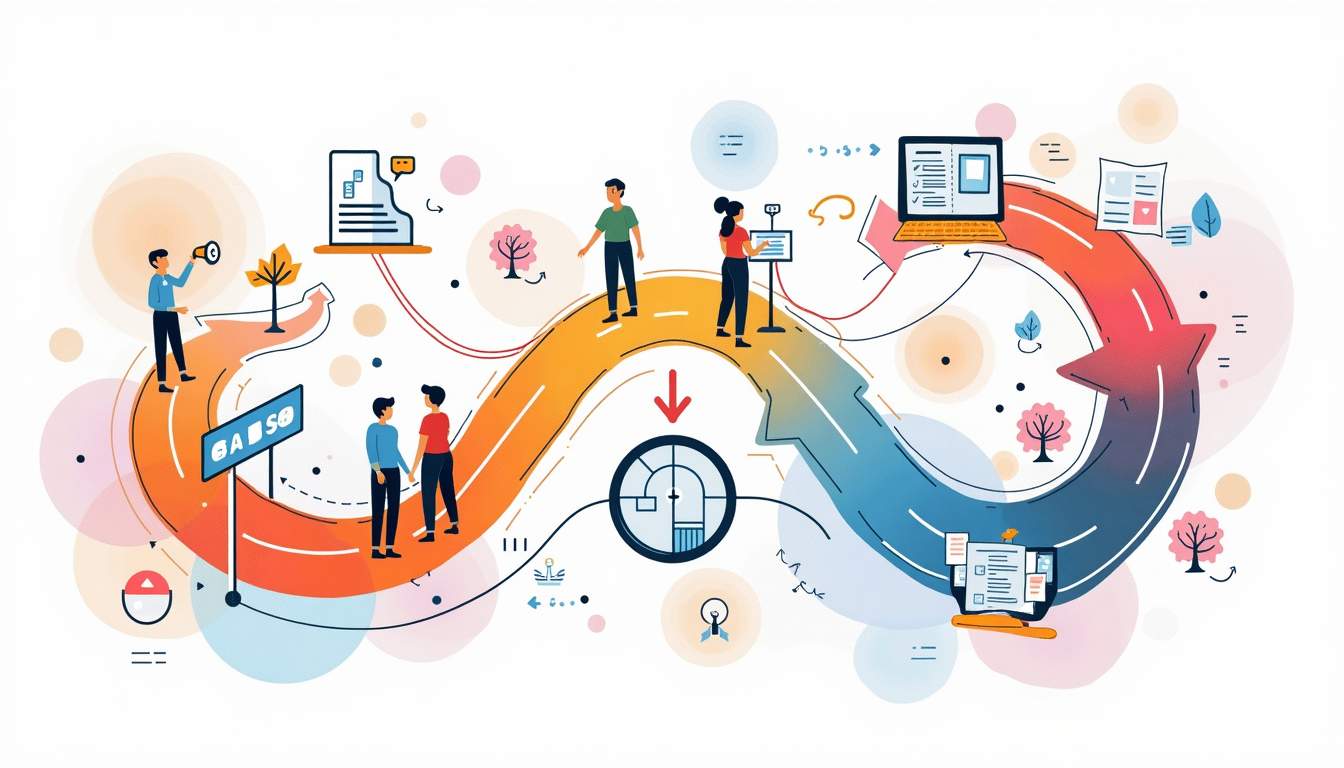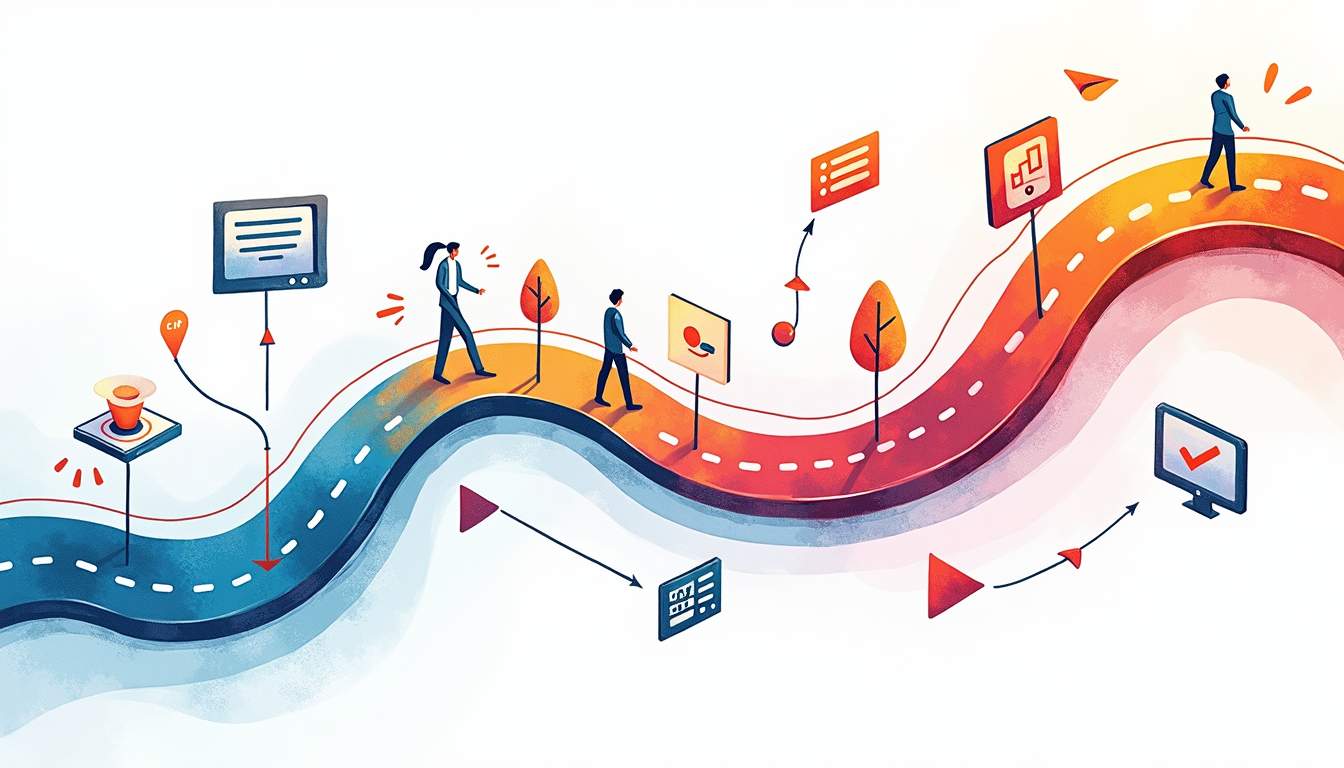Customer Journey Optimisation: Navigating the Path to Enhanced Experiences
Customer journey optimisation is more than just a buzzword; it’s a critical strategy for businesses aiming to thrive in today’s competitive landscape. With the global Customer Journey Analytics market projected to soar from USD 13.5 billion in 2023 to a staggering USD 59.4 billion by 2032, the urgency to refine customer experiences has never been greater. This growth, driven by a compound annual growth rate (CAGR) of 17.9% from 2024 to 2032, underscores the increasing demand for personalised interactions and seamless experiences.
Understanding the Customer Journey
At its core, the customer journey encompasses every interaction a customer has with a brand, from the first touchpoint to post-purchase follow-ups. It’s a complex web of experiences that can significantly influence customer satisfaction and loyalty.

The Stages of the Customer Journey
Typically, the customer journey can be broken down into several key stages:
- Awareness: This is where potential customers first learn about your brand. It could be through social media, advertisements, or word of mouth.
- Consideration: Here, customers evaluate your offerings against competitors. They might read reviews, compare prices, or seek recommendations.
- Purchase: This is the moment of truth. A smooth purchasing process can make or break the experience.
- Retention: Post-purchase engagement is crucial. This stage focuses on keeping customers satisfied and encouraging repeat business.
- Advocacy: Happy customers become brand advocates, sharing their positive experiences with others.
Mapping the Journey
Mapping the customer journey is essential for identifying pain points and opportunities for improvement. By visualising each stage, businesses can pinpoint where customers may encounter obstacles. This process often involves gathering data from various sources, including customer feedback, analytics, and direct observations.
The Role of Analytics in Optimisation
Analytics play a pivotal role in customer journey optimisation. With the rise of advanced technologies, businesses can now leverage data to gain insights into customer behaviour and preferences.
Sentiment Analysis
One of the most effective tools in this realm is sentiment analysis. A recent statistic reveals that 67% of enterprises using sentiment analytics report a 20% increase in satisfaction metrics. This demonstrates how AI-driven sentiment analysis can enhance customer experience by providing real-time feedback on customer emotions and reactions.
Data Integration
Integrating data from various channels is crucial for a holistic view of the customer journey. For instance, in June 2025, RingCentral launched a new Customer Journey Analytics platform that connects data from Unified Communications as a Service (UCaaS) and Contact Center as a Service (CCaaS) environments. This integration allows businesses to track customer interactions across multiple touchpoints, leading to more informed decision-making.
Benchmarking for Success
Bob Hale, CEO of Alterian, highlights the importance of benchmarking in customer experience. Without a clear understanding of how your customer experience measures up against competitors, it’s challenging to identify areas for improvement. Benchmarking provides a framework for evaluating performance and setting goals.
Establishing Metrics
To effectively benchmark, businesses need to establish relevant metrics. These could include:
- Customer satisfaction scores
- Net Promoter Score (NPS)
- Customer retention rates
- Average response times
By regularly assessing these metrics, companies can track their progress and make necessary adjustments to their strategies.
Emerging Technologies in Customer Journey Optimisation
The landscape of customer journey optimisation is rapidly evolving, with new technologies emerging to enhance the process. For example, a study published in September 2025 explored the use of RFID technology to track customer journeys in retail. This innovative approach integrates tracking and transactional data, providing unprecedented visibility into product flows and consumer behaviour.

AI and Machine Learning
Artificial intelligence and machine learning are also transforming how businesses approach customer journey optimisation. By analysing vast amounts of data, these technologies can identify patterns and predict customer behaviour, allowing for more personalised experiences. A study published in May 2025 proposed a novel approach for analysing customer journeys using prototype detection and counterfactual explanations for sequential data, aiming to support improvements in various marketing activities.
Challenges in Optimisation
Despite the advancements, optimising the customer journey is not without its challenges. Many businesses struggle with data silos, where information is trapped within different departments, making it difficult to gain a comprehensive view of the customer experience.
Overcoming Data Silos
To overcome these challenges, organisations must foster a culture of collaboration. This involves breaking down departmental barriers and encouraging teams to share insights and data. By doing so, businesses can create a more unified approach to customer journey optimisation.
Conclusion: The Future of Customer Journey Optimisation
As the customer journey analytics market continues to grow, the focus on optimisation will only intensify. Companies that prioritise understanding and enhancing their customer journeys will be better positioned to meet the evolving expectations of consumers. With the right tools, strategies, and a commitment to continuous improvement, businesses can navigate the complexities of the customer journey and ultimately drive success.
 In this fast-paced digital age, the journey is just as important as the destination. Embracing customer journey optimisation is not just a strategy; it’s a necessity for any business aiming to thrive in a competitive marketplace.
In this fast-paced digital age, the journey is just as important as the destination. Embracing customer journey optimisation is not just a strategy; it’s a necessity for any business aiming to thrive in a competitive marketplace.
